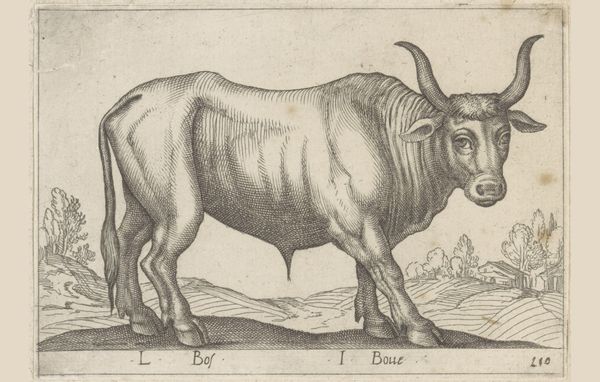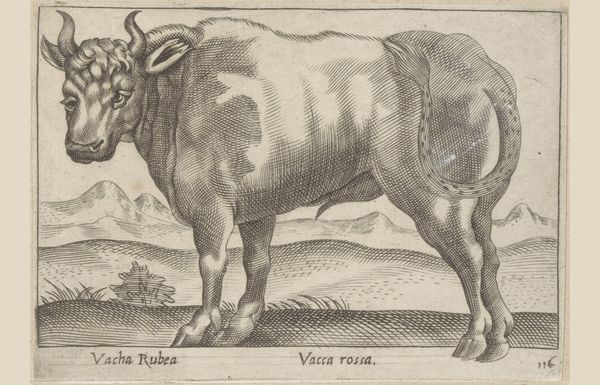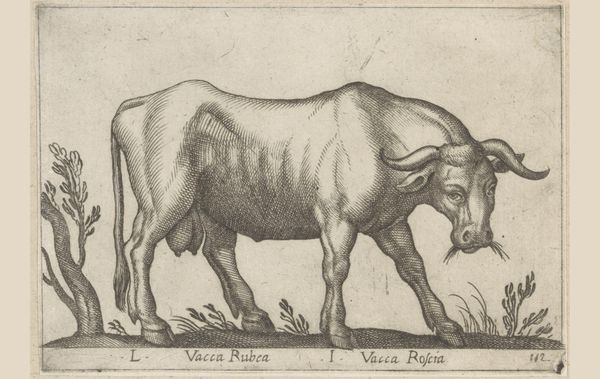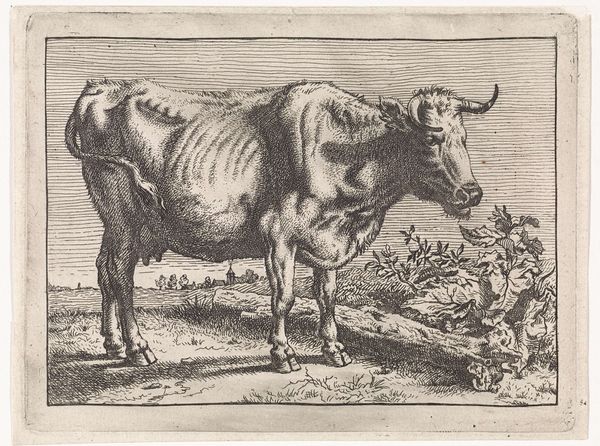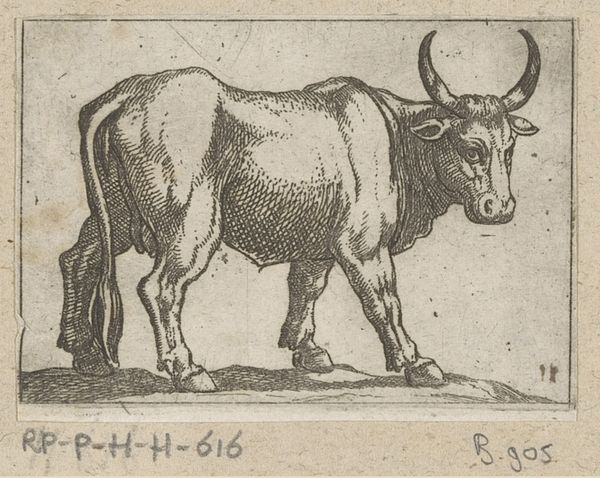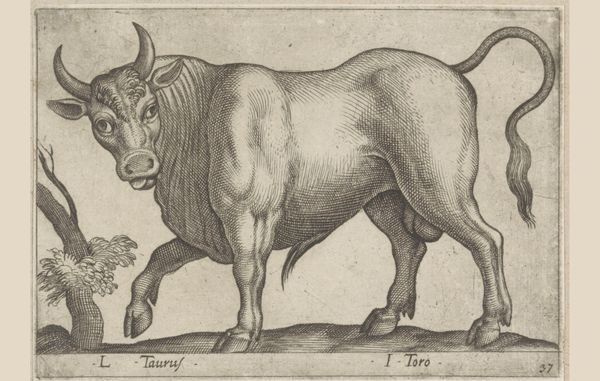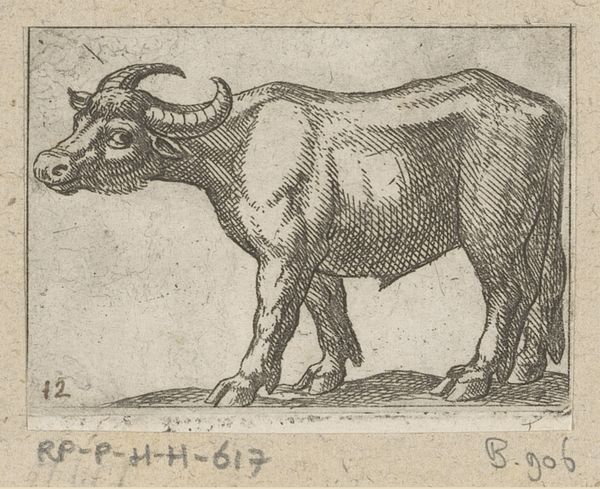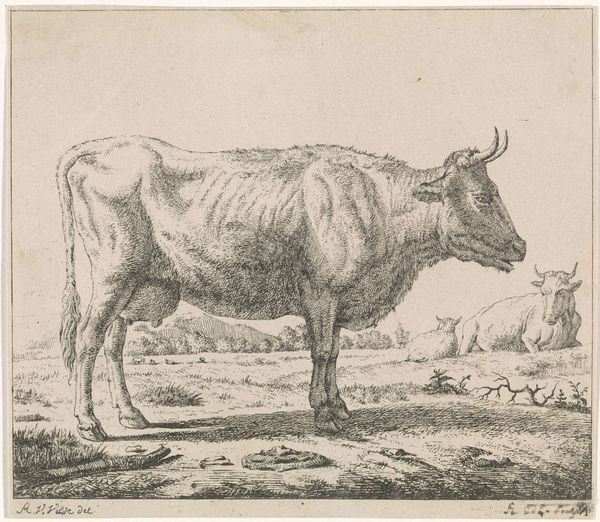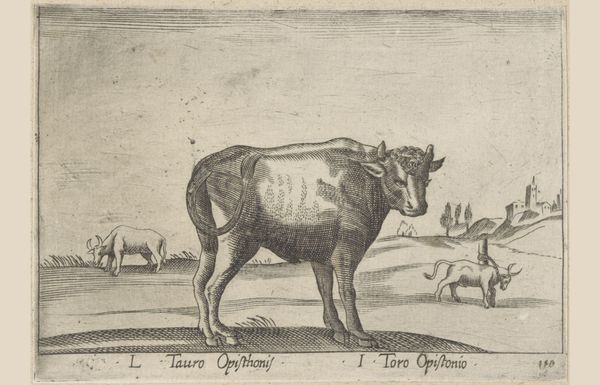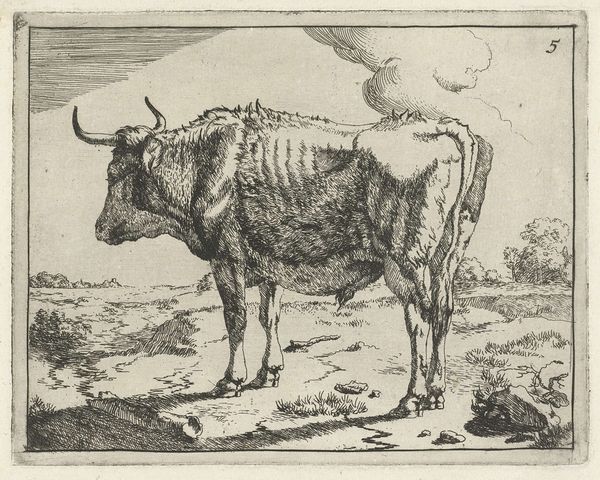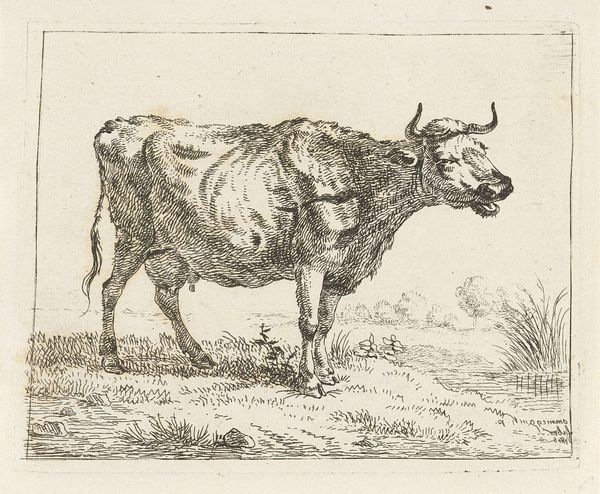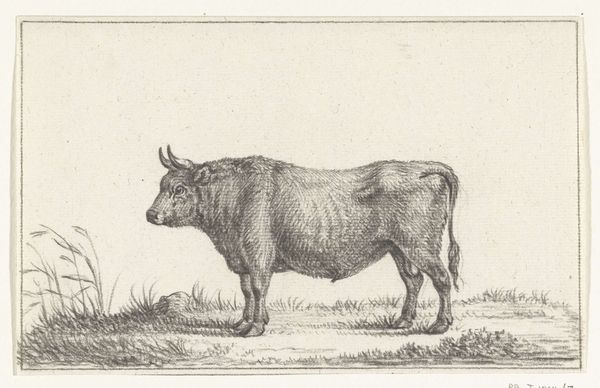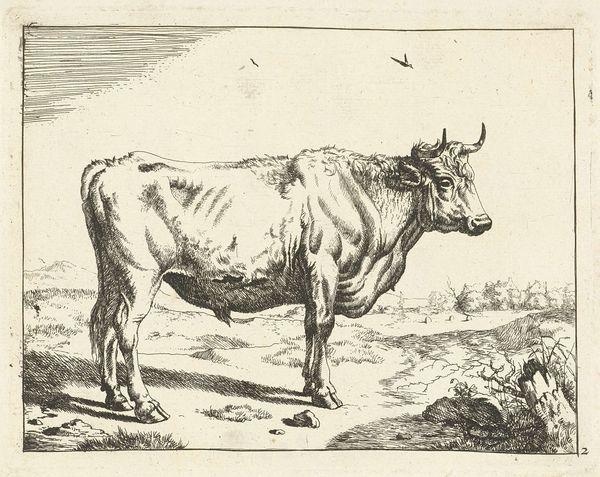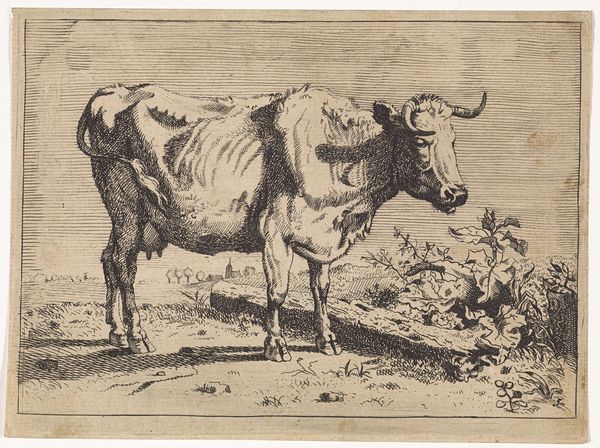
print, engraving
# print
#
old engraving style
#
landscape
#
form
#
ancient-mediterranean
#
line
#
genre-painting
#
history-painting
#
engraving
#
realism
Dimensions: height 95 mm, width 137 mm
Copyright: Rijks Museum: Open Domain
Editor: Standing before "Rund," an engraving from before 1650 by Antonio Tempesta, housed at the Rijksmuseum. It depicts an aurochs, an extinct wild ox. What strikes me is its static nature and also what looks to me almost like the early steps of zoological or even scientific illustration... given that it just depicts an animal. What historical elements can you bring to the foreground when looking at a work like this? Curator: Well, I notice the word "Rund," German for bovine. This print functions in a world grappling with natural history as a scholarly pursuit, influenced by the explosion of global travel. The artist and engraver, Antonio Tempesta, was no stranger to dramatic battle scenes; seeing him turn his attention to representing the animal kingdom speaks volumes. Don't you find this rather intriguing? How are animals, once simply resources, increasingly becoming subjects of representation in the realm of fine art and scientific investigation? Editor: Definitely intriguing, and the question about why it became so interesting is super helpful. Was there some popularization of zoology happening then? Were people without firsthand experience just obsessed? Curator: That is part of it. Certainly. Think about the role of princely collections, the wunderkammern overflowing with curiosities from every corner of the world. The market for prints allowed the images to circulate far more widely than ever before, essentially democratizing access, to a certain degree, to rare specimens for those who might never see them in real life. And the printing techniques, of course, had an impact on distribution of the image. Editor: It’s so interesting to think of this print as both a piece of art and a form of early science communication. It blurs those boundaries, in a way. Thanks! Curator: Yes, precisely. It challenges our modern definitions of what constitutes art versus scientific illustration. It speaks to the interconnectedness of visual culture, scientific inquiry, and the public sphere of its time. Thanks to you, as well.
Comments
No comments
Be the first to comment and join the conversation on the ultimate creative platform.
